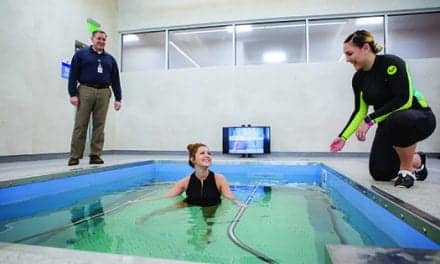
While performing the tests, researchers say they also used a video-oculography machine intended to detect minute eye movements. “Using this device can directly predict who had a stroke and who has not,” says David Newman-Toker, MD, PhD, study leader, associate professor of neurology and otolaryngology, Johns Hopkins University School Medicine. The device features a set of goggles, a USB-connected webcam and an accelerometer in the frame. A recent news release notes that the webcam is connected to a laptop, on which a continuous picture of the eye is taken.
The software then interprets eye position based on movements and views of the pupil, while the accelerometer measures the speed of measures the speed of the movement of the head. The study reportedly encompassed 12 patients at The Johns Hopkins Hospital and the University of Illinois College of Medicine at Peoria. Participants later underwent confirmatory MRI, resulting in 6 individuals diagnosed with stroke and 6 individuals with a benign condition using video-oculography. Researchers add that MRI was used to later confirm all 12 diagnoses.
According to Newman-Toker, the device may have the potential to prevent misdiagnosis of as many as 100,000 strokes a year, paving the way for earlier stroke diagnosis and more efficient triage and treatment decisions for patients with disabling dizziness. The technology also holds promise as an integrated smartphone application to enable wider access to a quick and accurate diagnosis of stroke with dizziness as its main symptom, Newman-Toker adds.
Source: Johns Hopkins Medicine




